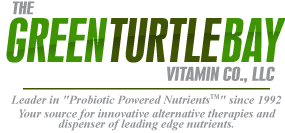Fibromyalgia
| Explanation and treatment at the The Podell & King Medical Practice Offices:
Chronic muscular pains are much more than a matter of just sore muscles. Whether chronic pain is regional (myofascial pain syndrome) or widespread (fibromyalgia), the problem is much more severe than just sore and achy muscles.
There are four main components. All are important to optimize healing: Recurring injury and bio-mechanical imbalances that perpetuate muscle strain. 1. Pain thermostat turned up: Central nervous system changes induced by muscle pain, that “turn up” the pain thermostat. This condition, called allodynia, makes normal people react abnormally to even low levels of painful stimuli that would that previously have not caused much distress. These changes are physical, not mental; real not imaginary. 2. Nerve cells size increases: The nerve cells that carry pain from the muscles into the spine actually increase in size as chronic pain persists. Serotonin in the central nervous system falls. Increased Substance P, an inflammatory neurochemical, causes pain when it’s released. Sophisticated brain imaging tests show pain pathways “lighting up” at levels of pressure on skin and muscle that would not show before the allodynia process has set in. 3. Vulnerablity to other diseases increases: Neurochemical, metabolic and hormonal dysfunctions caused by #1 and #2 that directly increase vulnerability to other diseases and conditions whose biochemical abnormalities overlap with those of myofascial pain and fibromyalgia. For example, chronic headaches, irritable bowel syndrome, irritable bladder, anxiety disorders, chronic fatigue syndrome, multiple chemical sensitivity syndrome, etc. 4. Chronic pain undermines physical health: Complications of chronic pain that indirectly undermine both physical and mental health e.g. disrupted sleep, inadequate exercise, increased craving for sugar, weakened immune resistance, discouragement and depression. The Podell Medical Center seeks to address each aspect of these problems. We do so in ways that combine the responsible and conservative use of conventional medication with holistic nutritional, herbal, biochemical, body-work and mind-body methods designed to support the body’s own natural systems for healing. . The most dramatic recent insight is that the kinds of medicine that work best for fibromyalgia and myofascial pain are not the traditional narcotic pain suppressors, such as codeine, or the highly potent non-steroidal anti-inflammatory medicines such as Celebrex. The best medicines instead are those that act on our nerve cells and neurochemistry to reduce and reverse allodynia, the body’s abnormal increased sensitivity to pain. None of these new medicines is a cure by itself. None works for everyone. And all have some potential for side-effects. However, with gentle patience by both patient and doctor, we can almost always finds one, two, three or more safe and effective drugs that help reduce pain vulnerability without undue side effects. What is encouraging (and surprising) is that many of the best new medicines are actually old-standby’s that have been used for years or decades for other conditions. Only now we are recognizing their additional beneficial effects for our neurochemistry. For example, Zofran, is a standard drug used to stop nausea for people taking cancer chemotherapy. However, Zofran also blocks the release of substance P, a main neurochemical contributor to myofascial and fibromyalgia pain. Perhaps two-thirds of people with fibromyalgia improve on Zofran. Baclofen is used for muscle relaxation for people with multiple sclerosis. Baclofen enhances the GABA neurotransmitters that help reduce central nervous system pain and also relax muscles. Neurontin and Gabatril are two more GABA enhancers that were first used to treat epileptic seizures, but which also can help chronic nerve and muscle pain. (Of course, from a natural perspective GABA itself is available from the health food store. Magnesium supplements also may help by acting on some of the same neural and muscle receptor sites that GABA also influences.) Zaniflex is another muscle relaxant first brought out for multiple sclerosis that can also reduce the body’s vulnerability to pain. Zaniflex modulates sympathetic nervous system pathways in the brain. (Surprisingly Zaniflex also reduces hot flashes among post-menopausal women, despite it’s having no estrogen hormone-like effect.) Nutritional, and herbal treatments:
Ironically, not having enough magnesium increases muscle spasm, as well as the general vulnerability to stressful stimuli such as load noise, chemical smells, and emotional distress. About two-thirds of our patients have hypoclycmia or blood sugar control problems due to the stress of their illness on the glucose/insulin system. Dietary guidelines along with a few quick and helpful nutritional tricks such as small supplements of olive oil, chromium or glutamine, can usually reverse this common complication. Restful sleep is crucial for natural healing. Research studies show that fibromyalgia-like pain can be produced in just a single night if a sleeping person is just jostled at a specific sector of the EEG dream cycle–even if they continue to sleep without being awakened Valerian root, 5-hydroxy tryptophan, passion flower, GABA, Melatonin, relaxation skill training and other natural approaches can do much to restore good sleep. With careful judgment, medicines can also help, with preference for those that don’t create habit or dependence. Individual Biochemistry and Metabolism : Specialized laboratories help us detect metabolic imbalances and dysfunctions: 1. Essential fatty acid analysis often shows a deficiency of omega-3 essential fatty acids. Amino Acid analysis often shows deficiency of branched chain amino acids, glutamine, taurine, tryotophan or tyrosine 2. Organic Acid analysis can cause us to suspect abnormalities of vitamin and mineral metabolism. 3. A comprehensive digestive and stool analysis can point to digestive enzyme deficiencies, yeast or bacterial over-growth, or parasites. 4. Food allergy testing or an elimination diet can identify “sensitive” foods that can make pain symptoms worse. Urine tests for milk or wheat derived opioid peptides can pin-point digestive abnormalities that can lead to toxic by products. 5. Hair analysis or DMSA provoked urine testing can detect high levels of mercury or lead. 6. We can trace the liver’s metabolic pathways for detoxifying chemicals to identify weak links that can be reinforced. 7. We can provide an individualized prescription for relevant nutritional supplementation. Personal counseling is also available with our dietician. Body-Work and Mind-Body Therapies: Many people with chronic muscle pain have tiny taut fibrous bands within the bellys of their most painful muscles. Trigger points within these taut bands are extraordinarily sensitive pain and also act to keep the entire muscle poised in spasm. One muscle’s spasm, in turn, excites another’s perpetuating a vicious cycle of muscle spasm, imbalance and pain. There are several effective means to reduce or reverse this process. These include Trigger point massage work (Travell technique) and physical therapy with a professional who understands the special sensitivity and needs of chronic muscle pain patients.
The Podell Medical Center seeks to identify persons who can benefit from these approaches. We do not do these body work therapies ourselves. We do refer selected patients to highly qualified professionals who are skilled in these techniques.
Chronic pain and chronic illness takes a psychological toll no matter how healthy or well-balanced a person. Most experts in the field believe that most (if not all) people can improve their sense of health and well-being by just a few sessions with each of these brief, but highly effective techniques: 1) Stress-resistance relaxation skills. We can teach a smorgasbord of these in just a few sessions. Most popular: slow-deep diaphgramatic breathing–reduces subjective stress and objective perception of pain; freeze-frame, a new technique the makes stress flow over and dissolve in real-time while you’re continuing to interact with people around you–without having to go off to a quiet room and meditate. 2) Cognitive skills training. To think clearer and more directly while avoiding the errors of over-reacting e.g. by seeing each modest reverse as the end of the earth. In addition to this our medical and behavioral science staff is ready to people whose illness has led to severe anxiety or clinical depression. We will cooperate with your current mental health professionals, provide direct services to you at our center, or refer to you specialists who are sympathetic to our patients special needs. Podell Medical Center http://www.DrPodell.org
|




